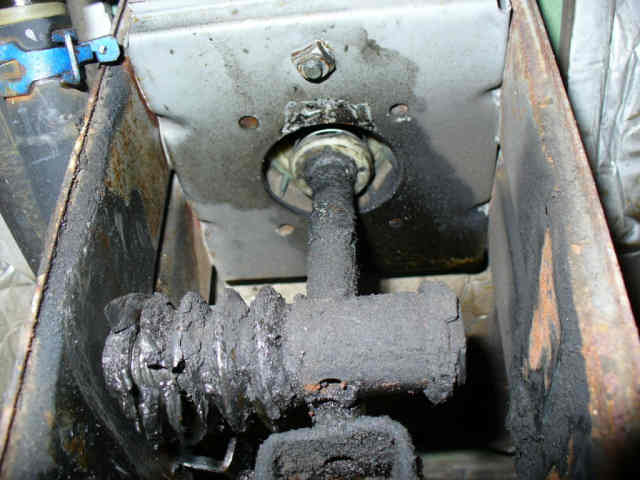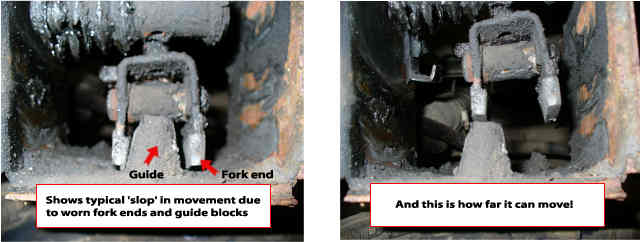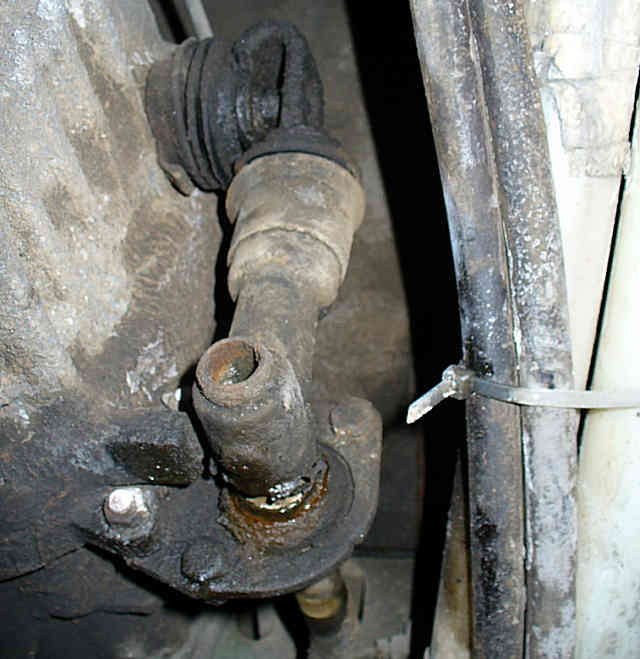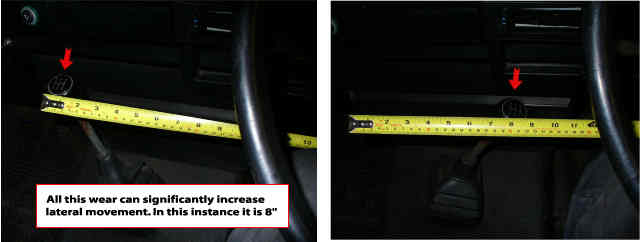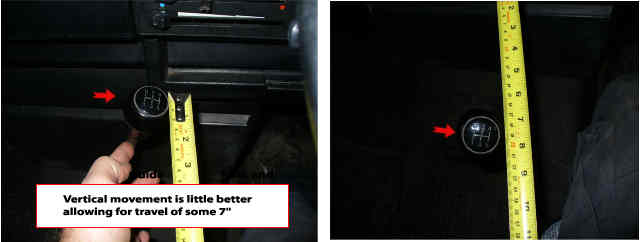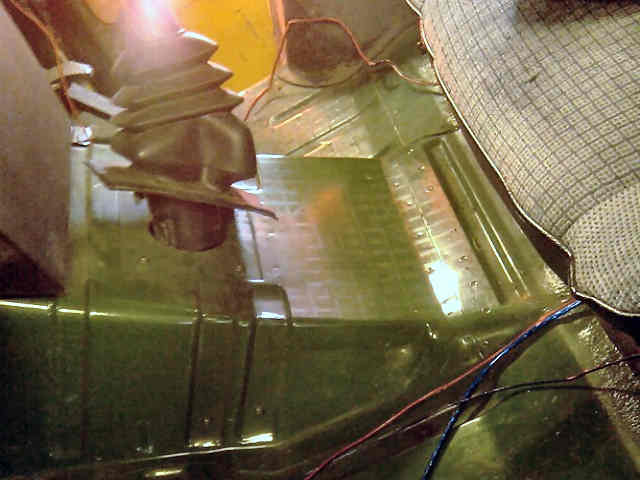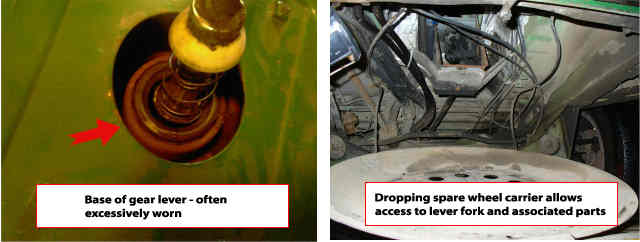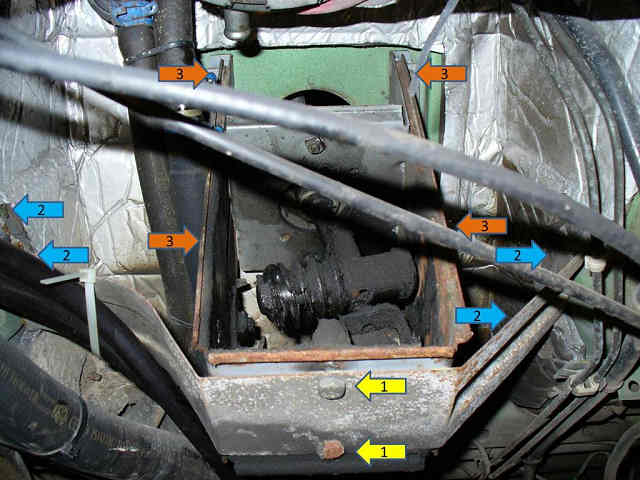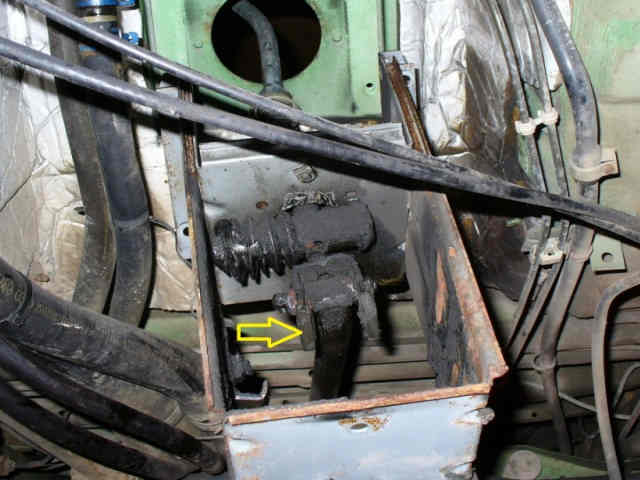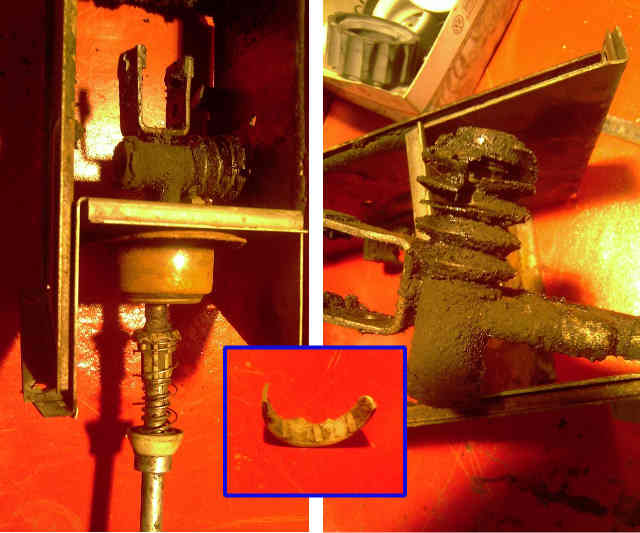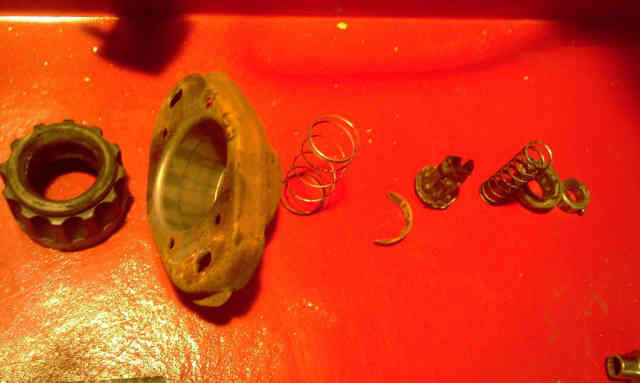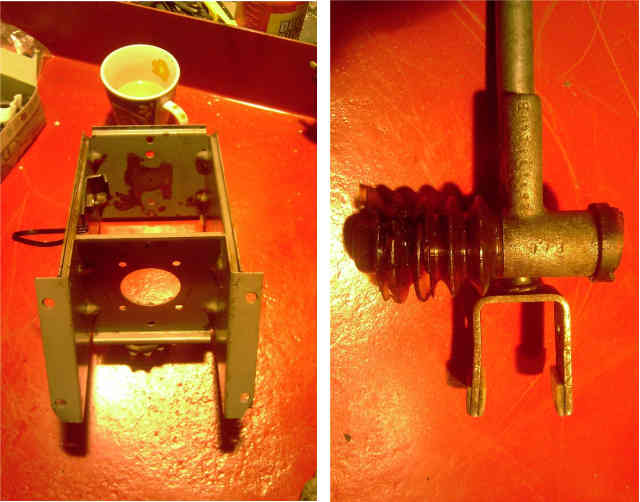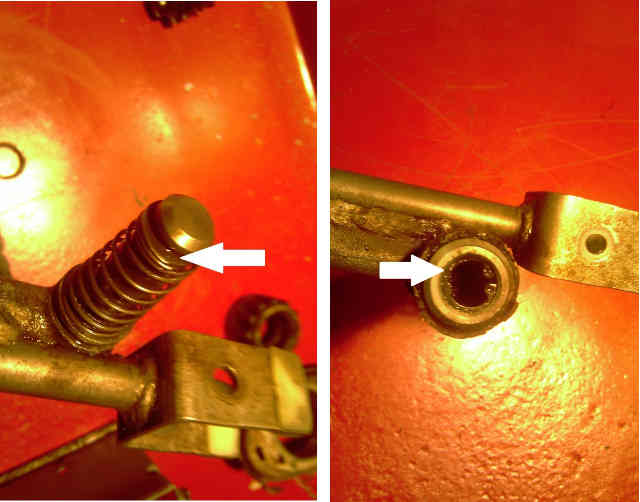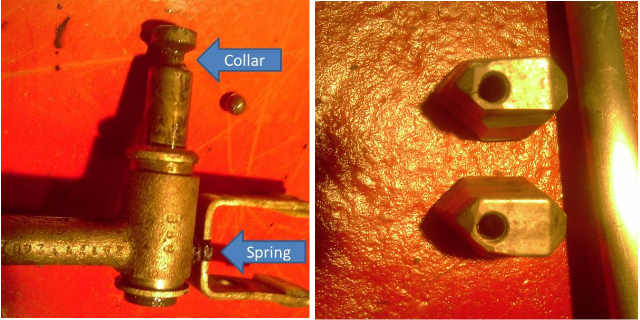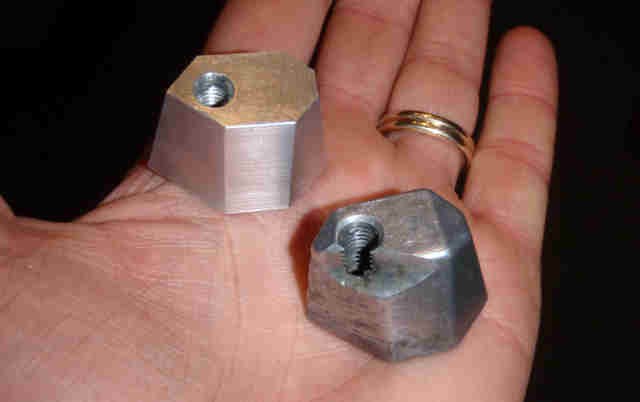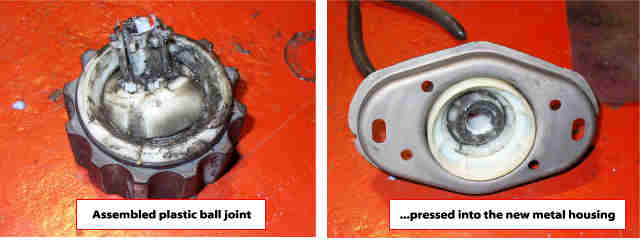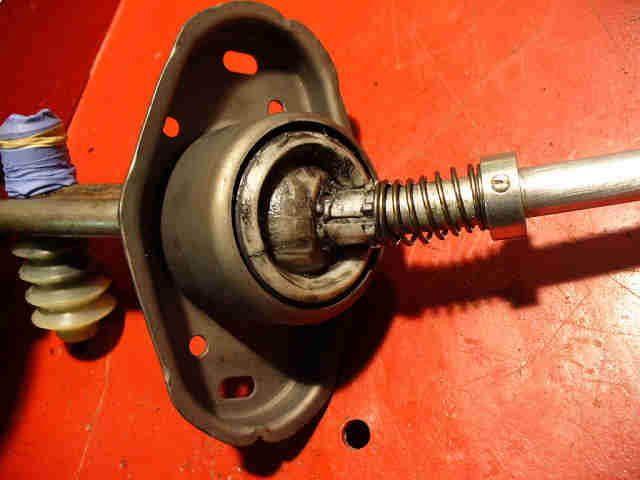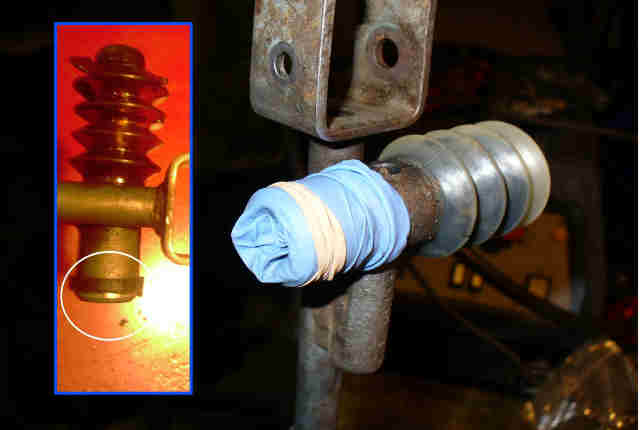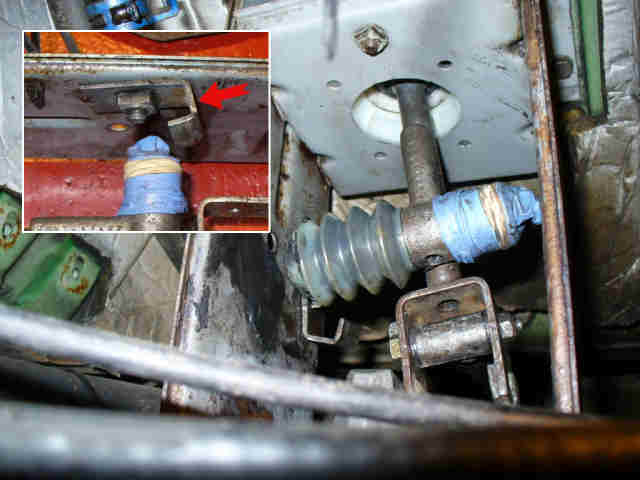Gearbox Clutch CVs - Renovating 5 speed change mechanism Pt1
Introduction
Intro by Covkid:
After 20 odd years and probably millions of gear changes, the gear change assembly simply wears out - as indeed do some parts of the gearbox eventually. Even with a good box, it can reach a point where some gears are very difficult to get into indeed and the whole thing starts to feel like you're driving the earlier bay window with the gear stick like a wooden spoon in a mixing bowl. Combined wear in gear change components adds up to magnified problems at the gear stick and this could well be why so many gears sticks snap - from frustration.
Note: Its worth considering before we move on, that a tired/worn or even leaky clutch slave cylinder will also cause very difficult gear changing so examine that first.
Whilst all the new parts combined are certainly not cheap, you may only need some of them. Replacing broken or worn parts can certainly transform the whole gear change train (it goes front to back remember). Most are available via Brickwerks and a few other outlets. If you're reading this you have probably already reached a point of no return anyway and now, thoroughly demoralised, need to sort the assembly out for good.
This detailed two-part article was penned and illustrated by member mm289, and shows the component parts, common wear points and how to restore a five gear change assembly to original state. Clearly broken or severely damaged metal parts may need welding or fabricating etc but usually the wear is in the nylon parts which are readily available. Other items could be made up from scrap where prudent to do so. Some previously obsolete parts are becoming available too as owners begin to start fabricating their own in small batches. This trend, encouragingly, is likely to continue with the T25 already having reached cult status - hoorah for that.
There may be very minor differences between years, and certainly between petrol and diesel versions (as I point out here and there) but the layout is still very similar. Wear points can be worse in some areas than others and but its as well to remember that none of this will put right a worn out gearbox. As a starting point to improve gear changes, this is a positive start though. This two-part article which includes links to the Brickwerks catalogue (if you're not a fabricator), is specifically about the highly-prized 5-speed but much shown here will apply to the 4-speed mechanism too albeit with variations. A 4-speed page can be found at http://wiki.club8090.co.uk/index.php/Gearbox_Clutch_CVs_-_Renovating_4_speed_change_mechanism_Pt1. You do not need to be a mechanic to do this job but you will need tools. This article was updated in February 2013.
Now its over to mm289....
The Wear Factor
The gear lever end looks like this underneath. In my case, there is a lot of movement. Movement in the shaft where it goes through the floor, the fact that stick will actually lift out (see photos) and a lot of gap between the fork bushes and guides. This section alone makes for a badly worn and less-certain gear change and we haven't even got to the rest yet!
Remember that the gear lever is indeed a lever so when you push left from inside the cab, it actually moves right underneath and if you push up, the gear change mechanism moves towards the rear of the vehicle.
Below: At the actual gear lever, component wear here contributes to excessive travel for the gear stick and vague gear changes. Worn aluminium guide blocks, fork ends and other missing or worn parts demonstrate the amount of play that can develop.
Turning to the rear end where the mechanism meets with the side of the gearbox, the selector ball joint can also have noticeable lateral and vertical movement
To give you some idea of the effects of all this wear, we can see just how much movement is created at the gearstick.
First lateral:
And vertical:
Tentative First Steps
The first job is to remove the gear knob (unscrews) then lift the cab mat and gear lever gaiter.
Covkid: On the Caravelle, this is slightly different as some have a section of wide flat plastic trunking which sits on top of the gear lever, designed to push heat from the front to the rear passenger department (at the expense of cold knees in the front in my experience). To remove this trunking section, first remove the plastic cowling just behind the gear lever by pulling it towards you evenly (on the extreme left in photo below). To remove trunking, there are usually four screws/bolts which fasten it to the floor, a line of screws at the rear and you may need to remove a seat belt fastener to get the room needed to lift it out - generally the passenger one.
Pictured below, the base of the gear lever often exhibits a great deal of wear. Access to the lever fork and guides is gained from underneath once the spare wheel carrier is dropped down:
Strip Down - Front End
At this point, you'll need to begin work underneath. Get some gloves on - this will be dirty work until you've cleaned everything. Undo bolts “1”, 13mm, also hold the shift guides (lumps of aluminium at the base of this box) in place so don’t lose them! Next bolts “2”, 4 off 10mm and then remove the carrier. Finally bolts “3” and the housing is free.
Covkid: On my 85 5-speed Petrol Caravelle, only four 10mm nuts (number 3 in diagram) held the housing in place. No additional bracing piece was in evidence either - presumably one of the main differences between diesel and petrol models here. This meant that the housing, complete with ally guide blocks came off as one. Much easier.
Finally undo the bolt securing the lever fork to the shift rod and the whole assembly will drop down through the floor.
This is what the linkage looks like complete with odd bits of debris (inset) found
Undo the two bolts (10mm) on the top of the bearing housing and push out the rubber guide. In my case this pretty much fell apart. Also undo the grub screw in the bushing on the gear lever holding the top spring in place.Now the whole assembly will slide off up the gear lever.
Below: Disassembled 'upper' parts from gear lever assembly:
Below: After an initial clean up of lower assembly components
Examining Front Components
Now to disassemble the spring and pin that creates the “detent” you push against to get 1st & reverse on a 5 speed (dog leg 1st on these puppies – just like a Ferrari) :wink:
Remove the rubber gaiter (above right) and you will see a spring over the guide pin held in place by a c-clip as shown below (left). Remove the c-clip (it will spring off so be careful not to lose it) and spring.
Now PROCEED CAREFULLY, because the detent is created by a ball bearing under pressure from a spring which pushes against a collar on the pin, if you just shove the pin out the ball bearing will pop out and run away – go on ask me how I know.
Photo on the right shows the aluminium guide blocks. Although obsolete from VW now, member Silverbullet makes new ones! Alternatively you could build up the worn shoulder with ally weld and grind back. Your choice but Silverbullet's are superior quality to originals - see below for comparison. Link: http://forum.club8090.co.uk/viewtopic.php?f=37&t=85849&hilit=aluminium+blocks
Below: Heres a comparison shot of worn fork ends and one fitted with new ones. New fork ends and new guide blocks not only make gear selection more of an exact science, they help reduce lateral play at the gear stick. A fork end kit is available for approx £27 from https://www.brickwerks.co.uk/index.php/t3-parts/t3-drivetrain/gearbox-transaxle/t3-manual/gear-lever-repair-kit-t3-14mm-2198.html
Covkid: Its also possible if you're on as very tight budget to replace the broken fork ends with some heavy-duty hose, flattened and slid on to the fork ends (tight fit needed) and secured with a suitable adhesive. I did this on mine and it worked out fine. However, the blocks above probably have far better wear characteristics. Will let you know in ten years.
Another thing you might like to consider is the gaiters used on selector shaft (front to back). Often missing or breaking up, and again, not cheap, I struggled to find a suitable length of this proper concertina type tubing anywhere. However, not a person to give up, in Wilkinsons I bought three black funnels (with flexible concertina spouts) for under £3 each. It was quite simple to cut the flexible part away and use these as gaiters. Do the maths on that one but there was quite a saving.
Replacing Front Components
Covkid: Below - this is what new parts look like. Brickwerks original kit (and at one time available from VW) cost around £50. A full kit can (I think) be obtained for aircooled vans with the 12mm gearstick but the 14mm (later watercoooled) is completely obsolete now. However, Brickwerks have solved this and replaced the original kit with two slightly less comprehensive kits - one for 12mm gear sticks and one for 14mm sticks (use an open-ended spanner to decide which size yours is). Heres the link to the 14mm one but check you have all the parts you'll need: https://www.brickwerks.co.uk/index.php/t3-parts/t3-drivetrain/gearbox-transaxle/t3-manual/gear-lever-repair-kit-t3-14mm-2198.html
As Brickwerks rightfully point out, the 12mm and 14mm gear lever parts are in fact identical with the exception of one half of the plastic ball and this part is included to make the 12mm into a 14mm kit. Other outlets stock ONE kit and say it fits all, but I'm not convinced and inclined to believe Brickwerks on this. They do say it is a compromise. However, I found that this additional part, whilst welcome, needed a little reworking around the edges where it meets the other part of the ball mechanism as it kept catching when installed on mine, despite the grease. It took some figuring out to work out why this was happening but smoothing the edges of the replacement part with a little sandpaper soon sorted the problem. In any event its a cheaper kit than the one previously stocked and to be honest, some of the parts in the original larger kit may not have been needed anyway.
For reference, if you look below, the new kit now includes everything from left to right up to and including the base plate but the spring and grubscrew collar on the right is not in the kit. Chances are, yours will be fine anyway.
Now assemble the new bearing (plastic ball joint). The two plastic shells are pushed into the rubber guide (looks like a big cog!). The lower ball half is then pushed into the shells, the spring fitted and the upper ball half pushed in as well. Lots of moly grease applied and the assembled bearing looks like this (below left). The next stage is to press the whole thing into the new housing supplied in kit (below right).
If you have the new kit, its probably pre-assembled. If you ordered the 14mm one, you'll need to press out the whole assembly from the base plate (push down around the edges and eventually it'll come out) and replace the 12mm part for the 14mm one. You need strong hands for this.
At this stage, theoretically, you could slide the bearing and housing onto the gear lever, put the final spring on and then lock in place with the bushing and grub screw (which screws into a recess on the gear lever so can only go in one place.) If you did this your assembled unit would look like this. HOWEVER....
...I can’t now fit it into the shift mechanism housing! You need to put the gear lever through the housing first and then put on the bearing housing etc.
Covkid: On the 5 speed 85 petrol (and some other years) you CAN put the whole assembly through as one. It differs as shown below:
Now moving to the end of the gear lever and the guide pin and spring. This was cleaned and re-assembled. The only tricky bit is depressing the spring and ball bearing whilst you push in the pin – not too difficult really though.
Covkid: The original '251 711 248 A' boot was split and when this article was penned, could still be purchased via Brickwerks from around £14. It is completely obsolete at VW. You'll need to check on stock.
Its not cheap at all considering what it is, but presumably small production runs or limited availability sometimes inflate what are relatively simple bits of plastic on vehicles. That said, it is difficult to see what else could be used until recently I had cause to replace one and had to think quickly on my feet. On a visit to Wilkinsons I came across a black flexible funnel for topping up oil where the concertina part was virtually identical in width and only £2.99. A minor mod to seal one end (work it out yourself) and I was good to go. The same funnel also doubled up as protective sleeves for bushes along the shift rod. Whatever you use in this area, remember that grease/solvents can affect some materials, as can wear.
On the other end of the guide pin assembly is a plastic cap (inset below) that stops dirt entering the bushing and also acts as a buffer to protect the end of the assembly hitting the housing when rocking the gear lever from left to right in neutral. (if you move the stick from left to right as you would when checking you are in neutral and get a metallic clunk, then likely this cap is broken/missing like it was on mine).
For the moment I have improvised a cover to stop dirt getting in (couple of fingers from used gloves, but will have to make something more robust if can’t find the right part!
VW still have this part, as do Brickwerks just under a fiver) - http://www.brickwerks.co.uk/shop?page=shop.product_details&flypage=flypage.tpl&product_id=1079&category_id=99 or you may even find something suitable around the home to replace it with.
And then the whole unit assembled:
Next to replace the 2 'top hat' bushes in the end of the shift rod. NOTE: these are no longer included in the overhaul kit but available separately. Old bushes can just be prised out with a sharp screwdriver and then replaced. These bushes allow for some degree of movement between fork end and shift rod that goes to the rear. They're under £4 for the pair: http://www.brickwerks.co.uk/shop?page=shop.product_details&flypage=flypage.tpl&product_id=1439&category_id=99
Inset below: This is the reverse gear lock, it bolts to the inside of the mechanism housing and stops you shifting straight into reverse.
When you go for reverse the left movement pushes against the guide pin/spring and then you press the gear lever down, which pushes the square lug on the back of the shift lever underneath the reverse gear lock. Hence reverse can only be selected with a left AND down movement.
Before moving onto replacing the bushes in the rest of the shift mechanism I wanted to see what difference just overhauling the bearing and shift mechanism had made, so reassembled the housing. Lateral movement at gear stick now reduced from 8" to 6.5" and vertical, a reduction of 1/2" although I've yet to tackle play along rest of change rod.
Now on to [Part 2]http://wiki.club8090.co.uk/index.php?title=Gearbox_Clutch_CVs_-_Renovating_5_speed_change_mechanism_Pt2
